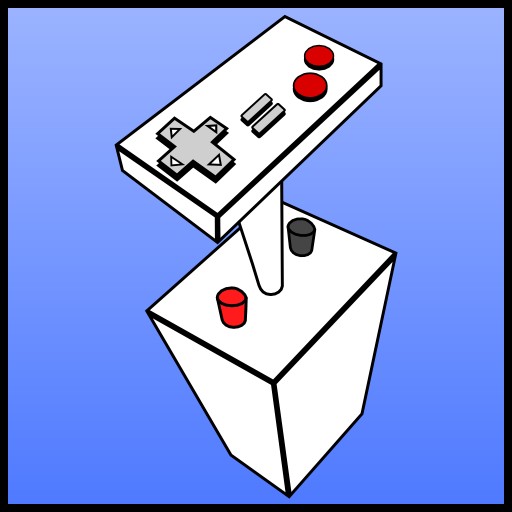
At last we have our first glossy drecko. It will take 5 cycles to grow up but then will be able to start producing some plastic for us.

First up today, a little bit of housekeeping. We need to move these grills over by one tile so the sweeper can reach them.

Our overflow hatch pens are also full, so it’s time for a cookout.

Having this many dupes in one place quickly consumes all the oxygen in the area.
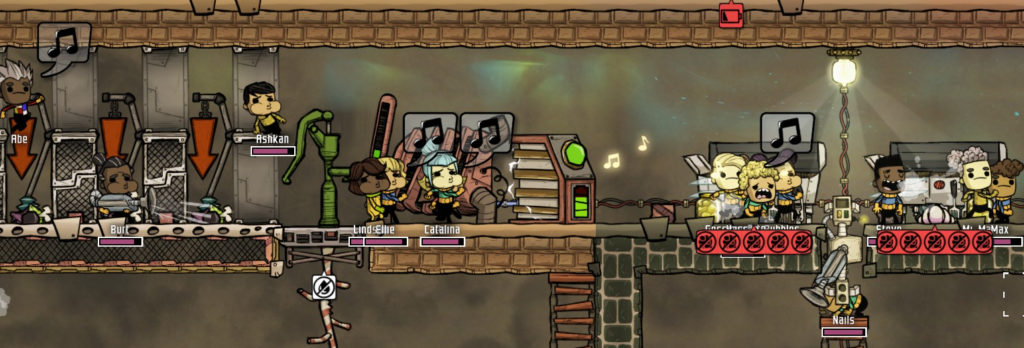
But in the end, we have enough meat to make about 6 cycles’ worth of barbeque. This will help offset some of the stress from sleeping in chlorine due to some of last episode’s choices.


Right now we are taking any Rancher we can get our hands on, since we have a lot of hatches to keep groomed and fed. This lets us grab conveyor loaders and rails, which are needed for the next stage of ranch automation.


Even with this many ranches, we’re going to need other foods to keep everyone fed, especially as we progress and end up with more and more dupes. So we plan on setting up more mushroom farms, and to make our slime go farther, we want to fertilize all of them. This will require a constant supply of fertilizer, so construction starts on a natural gas room.
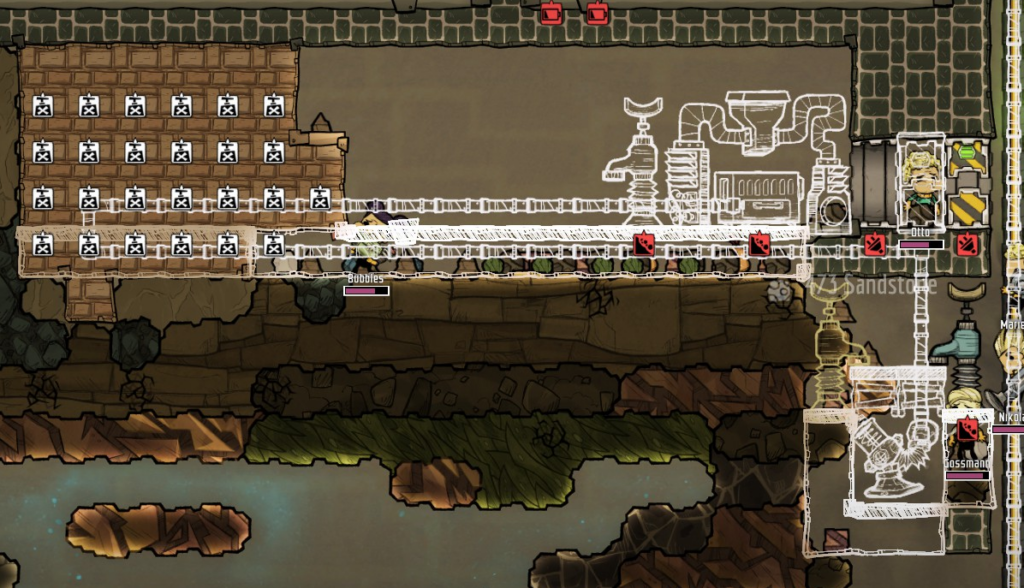
I don’t think I’ve ever had a game before where the first thing I made out of steel was a fertilizer synthesizer. The water pump is for the polluted water the building needs to run, and we run an extra-long wolframite pipe through the room to help keep things cool. We’re going to convert one of our existing mushroom floors into a greenhouse. First we need to put in the automation.

This needs power, which so far we’ve been borrowing from our lab setup since that isn’t running most of the time. But this will need more power than that can provide at times, so we set up a new circuit. We have plenty of coal so we’re going to keep using coal for everything.
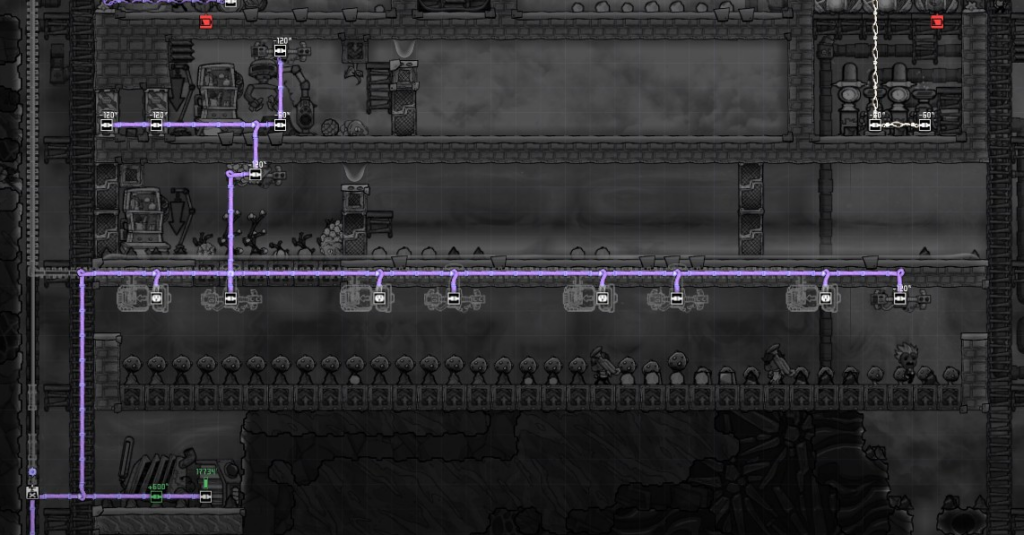
Some of this power is also used to set up automation for the drecko ranches. Right around this time we also get our first plastic. It’s still going to be a while before we can use it for steam turbines, as we don’t even have the ability to conduct materials science research yet.

Over on the swamp world, Stinky is about to get the last skill point needed for Field Research, which he will need to activate the teleporters (and analyzing geysers is a nice bonus).
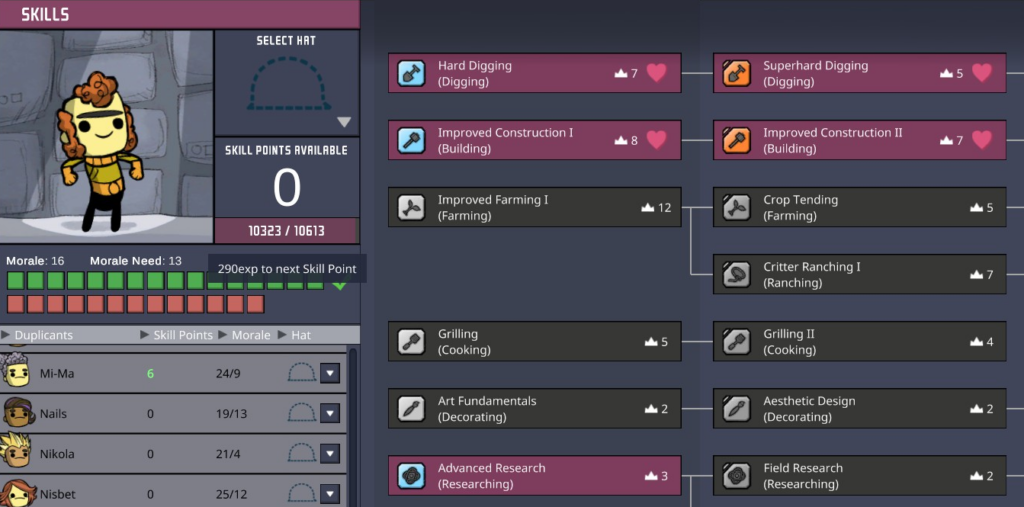
As soon as he gets the skill point, it’s off to activate the teleporter. We also have already built a small power circuit for the conveyor loader, so we can send seeds and eggs across as soon as it’s activated.

One thing you might not know about ONI: If a dupe has two interests with the same attribute as a bonus, you only get one of the bonuses. Of course the only bonus we really care about is getting to do another research. There’s nothing specific we want the insulated tiles for, but they will be useful everywhere.


I also encounter a weird bug. The game is really starting to slow down due to the amount of dupes around, but I don’t know if that’s related or not. I keep having pockets of extremely cold oxygen appearing in the middle of the ice biome. Nothing nearby is anywhere close to as cold; the cold is just appearing out of nothing. I wonder if it might have something to do with the water drip.


Our temporary solution of extra saltvines to take care of the chlorine “leak” is not working well.
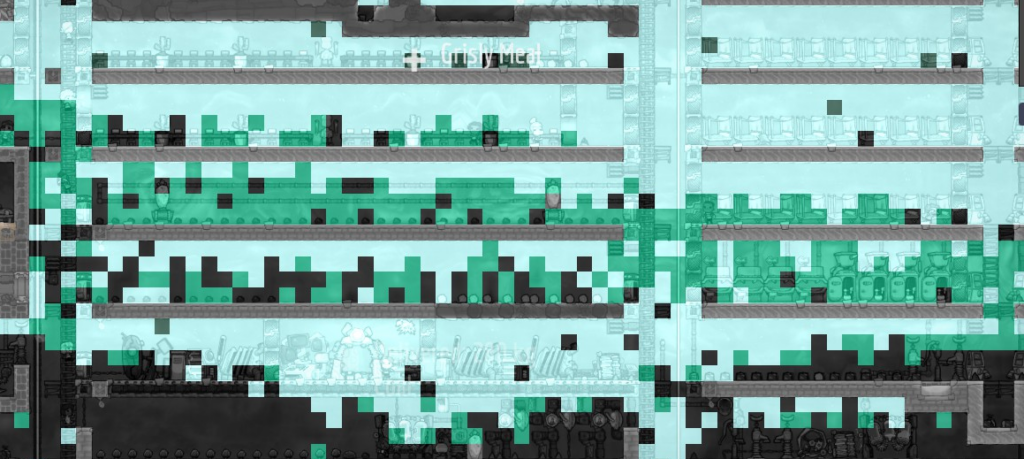
Maybe more saltvines?

On Reekito the main thing we wanted to use the teleporter for, long-term, was to supply water to the main asteroid. We start getting a small water tank together, and hook it up to the teleporter. The cool slush geyser is at the top of the ladder, so it will drain directly into the tank once opened up.
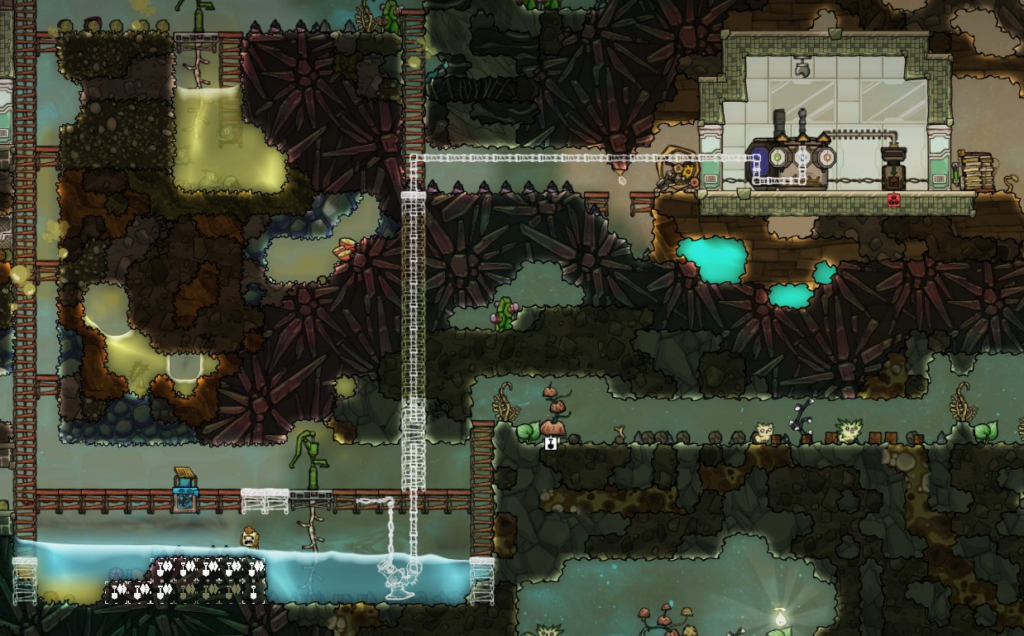
On Cycle 191 we take our thirty-first dupe and one of the techs we’ve been waiting on for a long time.


Normally we would want gas tanks to sequester chlorine until we can vent it into space, but here we’re making good use of it. What we really wanted here was the Thermo Regulator and radiant gas pipes. Not too far below our kitchen we start to build out a vacuum room for the regulator (and in the future, an aquatuner).

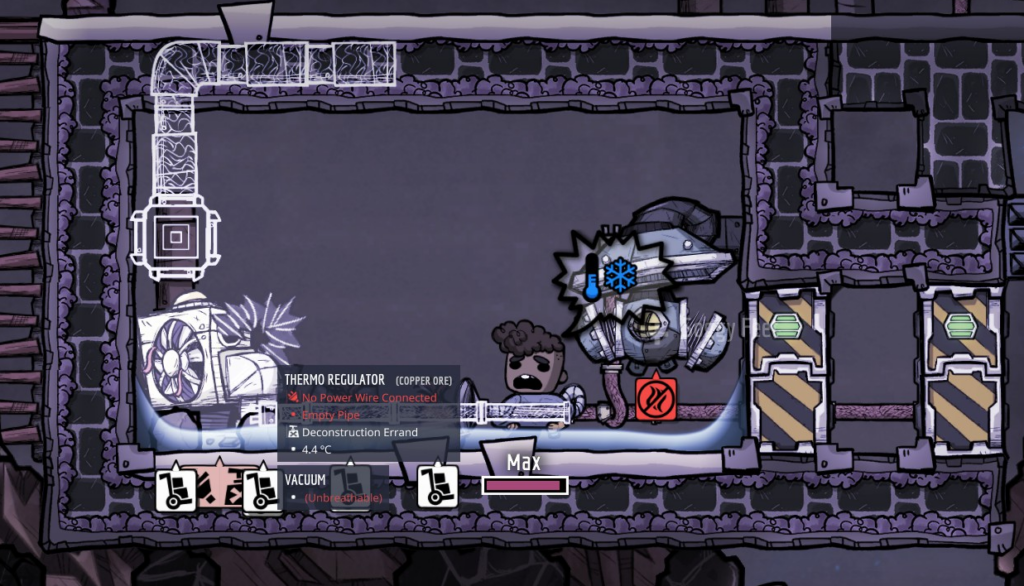
One ice tempshift plate provides enough water to serve as cooling medium for the regulator for a good while. Of course, I accidentally build it out of copper ore instead of steel the first time. This setup is simple and based upon my combined food and SPOM cooling design.

This will keep the hydrogen in the loop between -53 and -40 degrees, cold enough to deep freeze food but not so cold as to liquefy or freeze the carbon dioxide in the pit. The loop is run up to the pit in insulated pipes, where it turns into radiant pipes to cool the food storage.

Once it reaches temperature, we simply pull the plug on the fridges and they turn into freezers. The thermo regulator will take a while to catch up though. But once it does, we should never have any food spoil again. This number can only go up. We’ve also ripped out the remaining planter boxes of mealwood, and turned off pickled meal consumption for everyone. This can sit in the cold storage forever, and be pulled out either in emergencies or when we first start going to space (same with the muckroot). This means we effectively only have about 240,000 calories of edible foods. With 30 dupes on the homeworld, this is only 8 cycles.

To get the most out of the thermo regulator, which right now has no active cooling, only the cold water bath it sits in, we upgrade our insulated pipes to igneous rock and we might even change it over to ceramic.

When the water pipe to the teleporter on the swamp world gets hooked up, it’s going to need somewhere to go. We start a long (very, very long) pipe run from the teleporter to our icy water tank. On the other side, the water starts flowing and we also send some arbor acorns and pacu eggs through the conveyor teleporter.
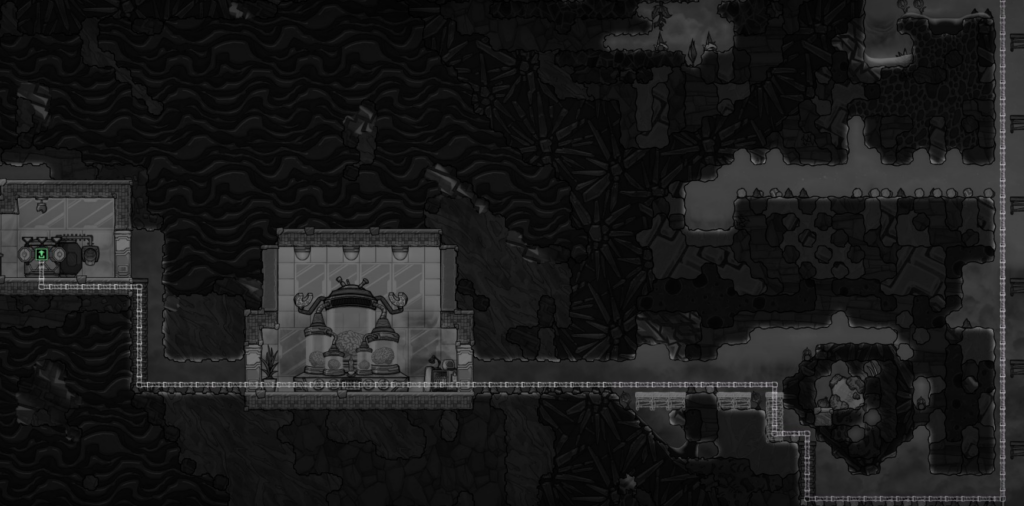
Further exploration on Reekito shows that the world has a frozen core. This didn’t show up in the world traits, I think it just happened randomly during seed generation. At least the bees will be nice and chill for a while.
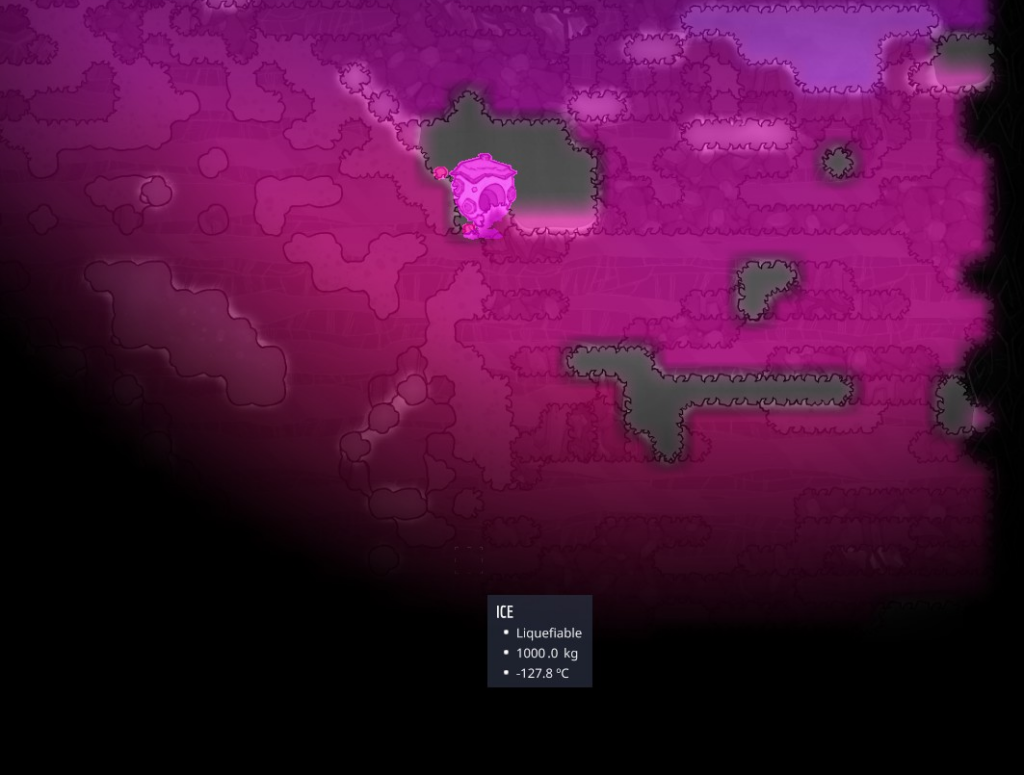
It’s cold enough that one of the carbon dioxide geysers is just spitting out solid CO2, leaving it in a vacuum and putting out what will effectively be an infinite amount. Might be nice when we get to slicksters, although it will need to be heated up a significant amount to be useful there.

Across the entire width of this world, the bottom is uranium biomes with bees and a bit of icy core below that. One of the hives is entombed in solid chlorine, but there are 6 more that will just run in the background creating tremendous amounts of enriched uranium.

Back home, we have ample copper ore for anything we’ll need ores for, so we switch one of the hatch ranches over to smooth hatches and start processing the cobalt ore from around the map. We could smelt it, but this gets us progress towards an achievement.

The pipe is finished and we start teleporting water between worlds.

This is also a good time to uncork the cool slush geyser.

A small mistake in building our expanded ranches lets a shove vole get into the base. It’s old enough to have already laid an egg, so we turn it into more barbeque.

It’s finally time to make a real SPOM now that we have sustainable water.

How did you do this. Why did you do this.

With our main task achieved on the swamp planet, it’s time to wake up a frozen friend. Ren is only interested in building, but it’s not the worst thing in the world. However, his main jobs, for now, are going to be to tidy up the place, run on the power wheel, and keep the bog buckets watered.
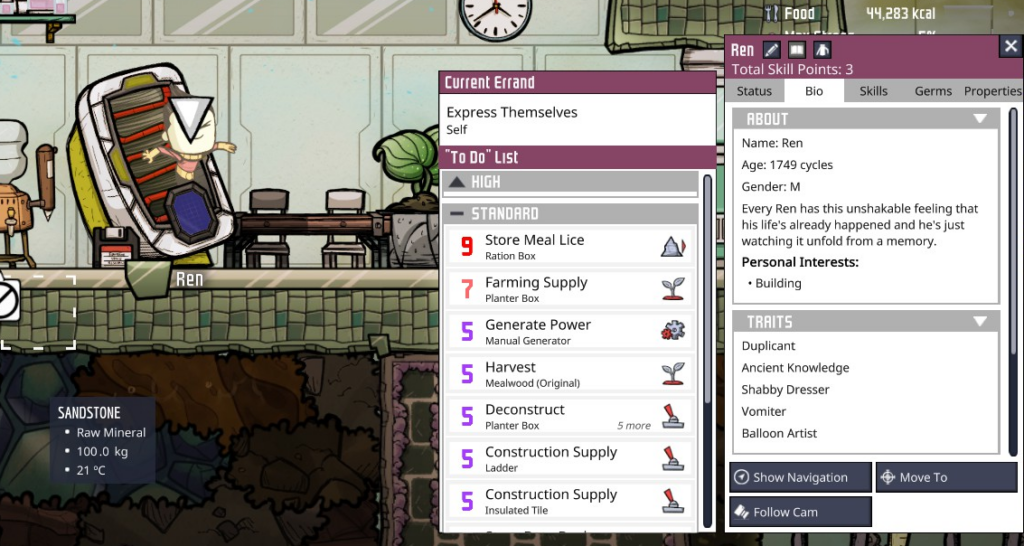
The pod also spits out a doctor. We should probably have a doctor. Unfreezing Ren also counts as another dupe that we can get a tech for, so it’s rad time.



As we near cycle 200, it’s time to take stock of everything.

The Chlorine IncidentTM has mostly been resolved, with the remaining chlorine mostly hanging around the labs.

I have to start running the game at 1x speed at this point, as the performance has dipped so low the game is no longer recognizing rooms all the time. I think it’s mostly due to the number of critters around, a problem that is only going to get worse as we expand the ranches, at least until we reach full automation.

With Materials Science Research available it’s time to move the lab away from the printing pod and into a dedicated laboratory room with its own power source. We can’t make use of the powered radbolt generators yet, so it’s manual for now. We do have plenty of labor that can help, at least.

Our ranch expansion is almost complete, and soon we can start sticking in auto-sweepers, conveyor loaders, and more automation.

With 32 dupes on the homeworld rapidly approaching, it’s time for a fifth barracks. At this point we don’t even really care about releasing the pocket of chlorine; we have enough saltvines planted around to eat it up.

The SPOM is under construction, and the drecko ranch is producing plastic.

Over on Reekito, the swamp world, we’ve dug out a small home and started pumping water back to the main world. Not shown is a regular water geyser and cool salt slush geyser off the top of the screen, almost perfectly in vertical alignment with the cool slush geyser. This will all be drained into the tank shortly, although I don’t want to hook up the brine geyser until we have desalinators, since this is getting pumped directly into our main water supply for our SPOMs, which only has a water sieve attached.
Altogether, we are right on the cusp of breaking through a lot of the challenges that have held us back for most of 200 cycles. Food is steady and about to get even more so; a full Rodriguez will provide stable oxygen for 30 dupes, more than enough when combined with our other oxygen sources (which can supply for 21 on their own) to push towards 50+ dupes and advanced technology.
We are still missing a few key things. Research-wise we don’t have aquatuners (or even radiant pipes!), but we are about to get steam turbines running. Our under-construction SPOM doesn’t have any active cooling yet, but it has been planned for. We lack a main power supply; our base is a collection of about 8 disconnected power grids, most of which are running off one or two coal generators. Consolidating those and creating a main power spine are high up on the list of things we want to accomplish in the near future. Finally, our temporary base on the second planet is still very temporary, we are relying entirely on polluted water offgassing to supply air for two dupes, and we are still living out of the teleporter room without a substantial food supply.
The move into advanced material science research marks a good dividing line between the early game and midgame, so I’m going to call this the end of Chapter 1. There will be an intermission post or two, and then we dive head-first into the midgame with the first part of Chapter 2 – Steam and Stress.


